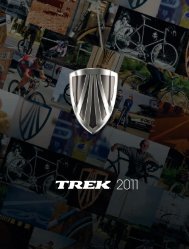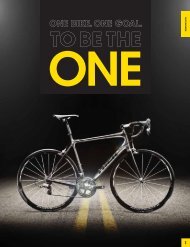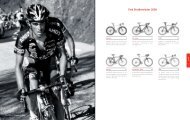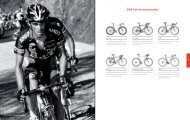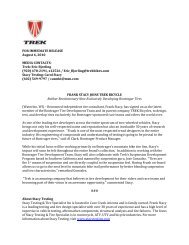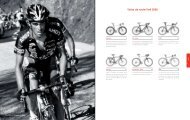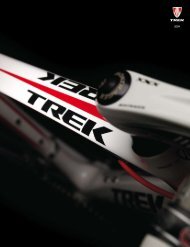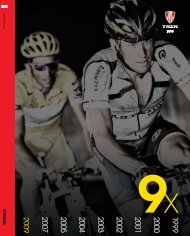Airfoil Development for the Trek Speed Concept ... - Slowtwitch.com
Airfoil Development for the Trek Speed Concept ... - Slowtwitch.com
Airfoil Development for the Trek Speed Concept ... - Slowtwitch.com
Create successful ePaper yourself
Turn your PDF publications into a flip-book with our unique Google optimized e-Paper software.
With careful design, <strong>the</strong> KVF with a virtual tail realizes almost all of <strong>the</strong> drag savings of an ideal (higher) aspect ratio airfoil with a<br />
physical tail. The virtual tail <strong>com</strong>bines with <strong>the</strong> KVF to create a single effective airfoil of ideal aspect ratio, as shown in <strong>the</strong> figure<br />
below. Note that this figure is <strong>for</strong> 0˚ yaw, but flow separation (pressure drag) dramatically increases with yaw angle.<br />
Figure 16: Drag coefficient versus aspect ratio<br />
<strong>for</strong> traditional airfoils. Modified from [8].<br />
3.1 Validation of KVF Flow Behavior<br />
3.1.1 High <strong>Speed</strong> Camera Visualization<br />
While <strong>Trek</strong>’s CFD airfoil analysis techniques had been wind tunnel-validated to provide accurate <strong>com</strong>parative drag predictions, it was<br />
not yet certain that CFD fully-captured <strong>the</strong> qualitative flow characteristics. Particularly, <strong>the</strong> virtual tail phenomenon was yet to be<br />
proven in <strong>the</strong> real world. Fur<strong>the</strong>rmore, <strong>the</strong> all-important flow separation behavior is known to be difficult to accurately model in CFD,<br />
particularly <strong>for</strong> low Reynolds Number airfoils at large yaw angles [9]. So, an experiment was developed to validate <strong>the</strong>se behaviors in<br />
<strong>the</strong> real world.<br />
The goal of this ambitious experiment was to create images of <strong>the</strong> real-world flow around <strong>the</strong> KVF, which could be directly <strong>com</strong>pared<br />
to <strong>the</strong> CFD predictions previously shown in Figure 15. In <strong>the</strong> end, <strong>the</strong> experiment would utilize <strong>Trek</strong>’s Photron SA-3 high speed camera,<br />
a smoke wand, and four airfoil sections custom-designed <strong>for</strong> this visualization. This visualization method would prove to be both<br />
highly <strong>com</strong>plicated and successful, so <strong>the</strong> details will not be described here. The basic setup is shown in <strong>the</strong> figure below.<br />
16<br />
Figure 17: Smoke visualization test setup.<br />
Notes: For illustration purposes only – some details<br />
have been intentionally changed and hidden. San<br />
Diego Low <strong>Speed</strong> Wind Tunnel.




